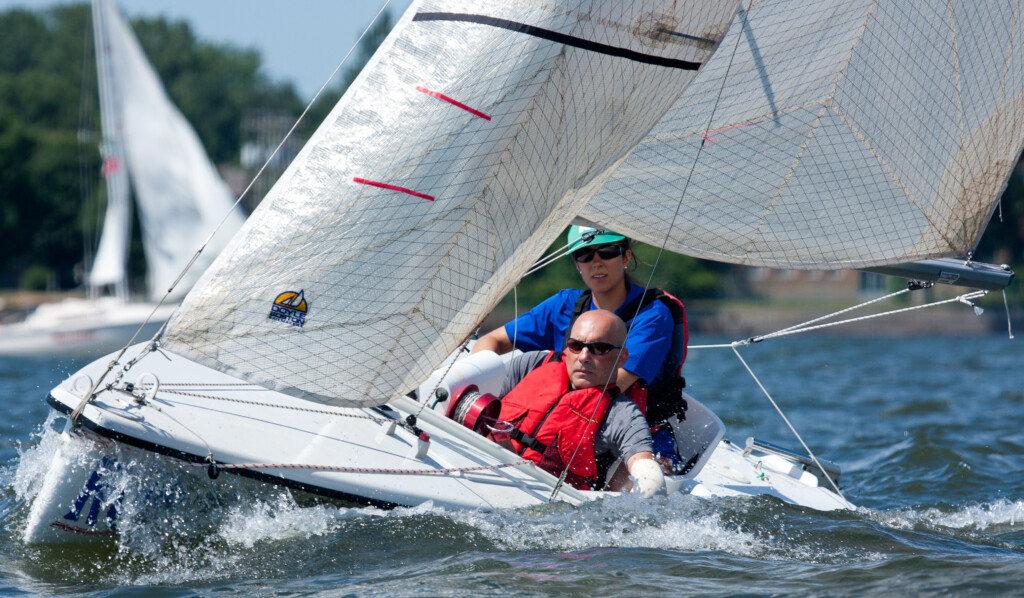Room 4 – Hockey Research & Practice | Salle 4 – Innovations dans la recherche et pratique du hockey
How technology influences the sport system
From boosting player performance to transforming fan experiences, AI and big data are shaking up the sports world like never before. Dive into how these cutting-edge technologies are redefining the sport industry!
Wearable sweat loss measuring devices
As technology continues to advance, athletes are increasingly using devices to enhance their performance and overall health. Wearable sweat sensors have become one of these key tools for health tracking. Here are recent developments in sweat loss measuring devices and how they contribute to improved tracking and monitoring of overall body health.
Smooth sailing: The evolution of adaptive equipment in the sport

Brian Cuerrier of Belleville, ON uses the windlass to race at the Quebec Cup regatta in Pointe Claire Quebec with companion Emilie Léonard in 2015. Photo: Luka Bartulovic Innovations in sailing technology A slick white hull cuts through the salt waters just outside the Northwest Arm, a narrow inlet off Halifax, Nova Scotia. The 16-foot…
VR for balance in elderly people
The aging population is growing in the world, and the reduction in physical function caused by this is an important issue that, particularly, causes a disorder of balance and an increased risk of falling. According to this recent study, it seems that virtual reality training programs could serve as an innovative and effective approach to…
Transforming women’s sports through technology
In women’s elite sports, technology is transforming the game. Deloitte predicts that wearables, data analytics, and immersive fan experiences will optimize athlete performance and recovery. Embracing these technologies not only enhances fan engagement and opens new revenue streams but also fuels the growth and sustainability of women’s elite sports. It’s a win-win for players, fans,…
Machine learning and injury
Injuries are common in sports and can have significant physical, psychological and financial consequences. A recent study found that current machine learning methods can be used to identify athletes at high risk of injury and be helpful to detect the most important injury risk factors.
AI for sport development
Despite still being in early stages of development, Artificial Intelligence (AI) advances in scope and capabilities every day. Through this development there are more opportunities to implement it in various avenues of life. A recent study highlights the relevance of AI applications to physical educational technology.
Fitness apps and activity trackers promote activity
Mobile apps and fitness trackers are a convenient way to monitor activity, set personalized activity goals and receive feedback on your activity levels. Fitness apps and activity trackers encourage better activity habits; for example, researchers found that those who use apps and trackers take approximately 1850 more steps per day, which is equal to just…
3 artificial intelligence tools that can aid sport organizations’ communications efforts

With heavy workloads and limited staff capacity, sport organizations are constantly seeking ways to improve efficiency. In recent years, artificial intelligence (AI) tools have become an increasingly popular way for organizations to leverage their capacity. In this blog, SIRC outlines 3 different AI tools and how they can aid sport organizations’ communications efforts. DeepL DeepL…